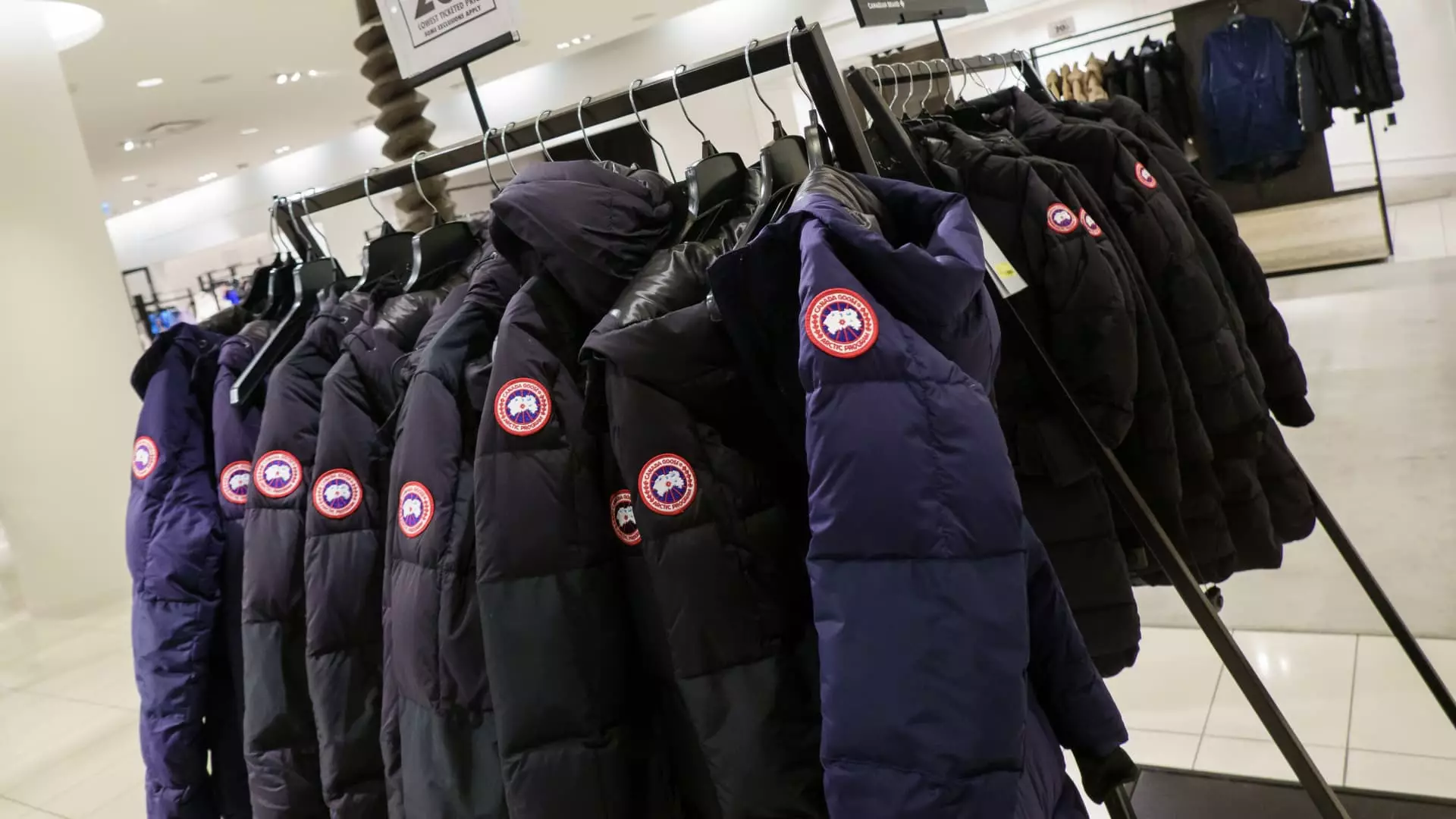Canada Goose, the Canadian luxury outerwear retailer, has unexpectedly surged in stock value, witnessing an impressive 20% increase following the announcement of its fiscal fourth-quarter earnings. This significant leap is a testament to the company’s financial resilience, yet it raises critical questions regarding sustainability in a volatile market. The reported earnings per share of 33 Canadian cents, significantly surpassing Wall Street’s expectation of 23 cents, signified not just monetary growth, but a striking demonstration of savvy business maneuvering amidst economic choppiness. Similarly, revenues of CA$384.6 million beat forecasts and reflect robust consumer engagement, demonstrating that there is still a segment of the market willing to invest in luxury, even as broader trends signal caution.
Bewildering Macroeconomic Uncertainty
Despite the strong earnings, Canada Goose has refrained from providing a financial outlook for fiscal 2026, citing “macroeconomic uncertainty.” This cautious approach appears prudent, considering that shifting consumer spending and a turbulent global trade landscape create an unpredictable backdrop for luxury retailers. The decision underscores a proactive understanding of market dynamics, yet it paints a mixed picture of confidence versus caution. Are they truly confident in their brand strength, or is there an underlying anxiety that tempers this optimism? It’s alarming that the luxury sector, with heavyweights like LVMH and Gucci also showing signs of a sales slowdown, reflects broader consumer apprehension.
CEO Dani Reiss’s assertion that Canada Goose has historically weathered economic storms offers a glimmer of reassurance, but this sentiment could easily be seen as hollow bravado unless matched by tangible results in the coming quarters. The luxury market is notorious for its fickle nature, and one misstep could unravel years of hard-won momentum.
Domestic Production as a Competitive Advantage
Interestingly, Canada Goose positions itself as a predominantly Canadian enterprise, with approximately 75% of its units produced domestically. The commitment to domestic manufacturing is critical—not merely a nod to patriotism but an astute strategic move to mitigate the fallout from tariffs, particularly in the context of the US-Mexico-Canada Agreement (USMCA). Chief Operating Officer Beth Clymer noted that the company is largely insulated from tariffs thanks to this arrangement. However, with a segment of production still impacted by European tariffs, the extent of these impacts remains a point of concern. Ultimately, Canada Goose faces a balancing act: maintaining its luxury status while maneuvering through an increasingly complex trade environment.
Innovation in Product Expansion
An intriguing aspect of Canada Goose’s strategy emerges from its recent product expansion efforts. As the brand diversifies into non-winter categories, including rain jackets and warm-weather garments, it also seeks to deepen its technological engagement with customers. The recent launch of AI-powered virtual try-on tools for its eyewear is telling. This initiative not only represents a novel approach to product engagement but highlights a potential paradigm shift in how luxury brands must adapt in an increasingly digital world. Such innovations could prove pivotal as Canada Goose attempts to fortify its identity beyond its traditional winter offerings.
The luxury market’s success now hinges on the capacity to sustain engagement year-round, transforming seasonal relevance into a continuous conversation with consumers. However, one must ponder: is the shift substantial enough to attract a clientele traditionally focused on high-priced winter wear?
The Luxury Market’s Broader Challenges
Overall, Canada Goose occupies a curious intersection of ambition and anxiety within the luxury market’s current state. While its figures paint a portrait of resilience, the broader narrative presents a more fraught landscape where consumer behavior is unpredictable and teetering. Historically, luxury brands have been perceived as status symbols, insulated from economic woes, yet that paradigm is being tested. With other luxury giants disclosing their sales slowdowns, the common thread of unease weaves through the sector.
As Canada Goose prepares for the critical revenue months ahead, it must embrace a dual approach: continuing to showcase financial strength while remaining attuned to the trembling undercurrents shaping consumer sentiment. The road ahead will undoubtedly be nuanced, filled with opportunities for boldness and pitfalls of hesitation. The question remains: can Canada Goose capitalize on its current momentum without losing grip on the complexities of the environment it operates within?

